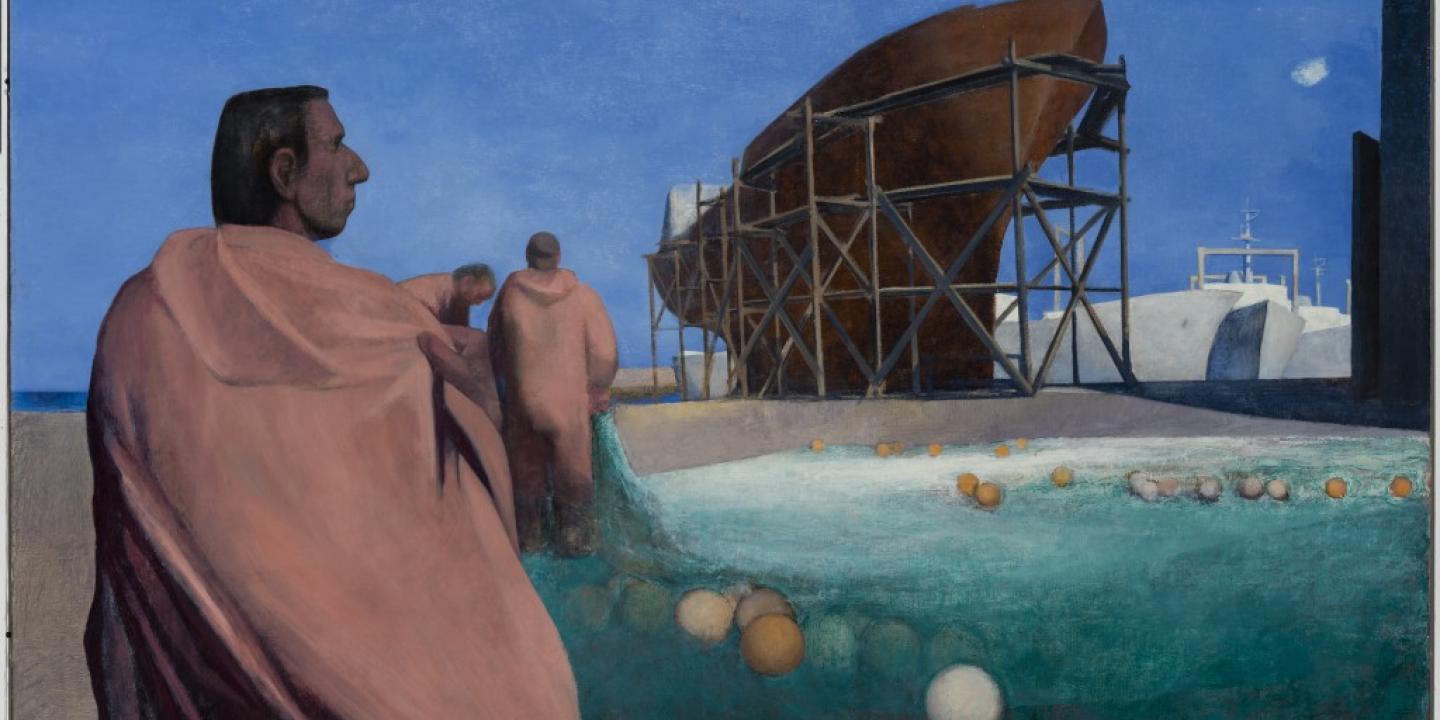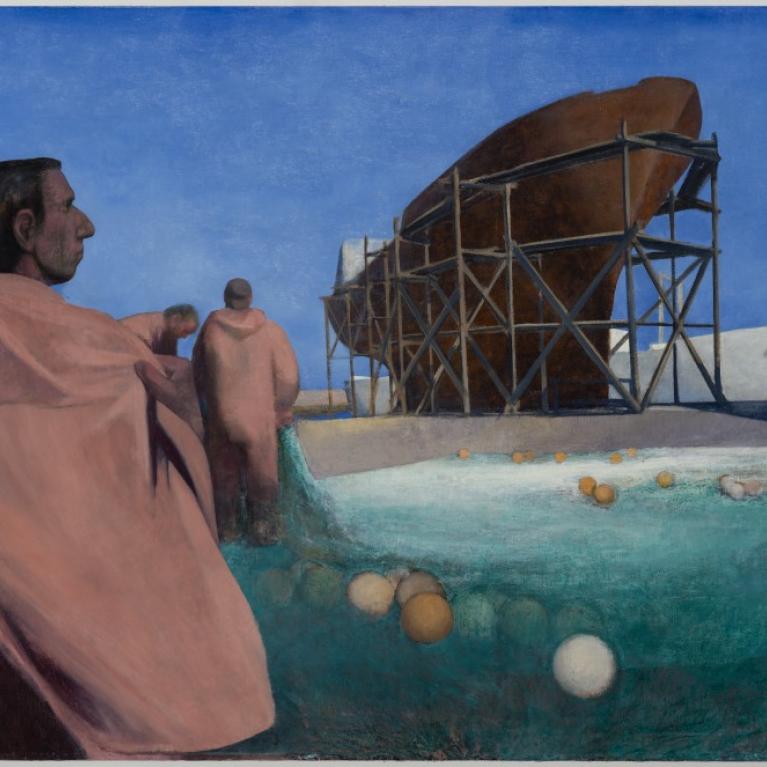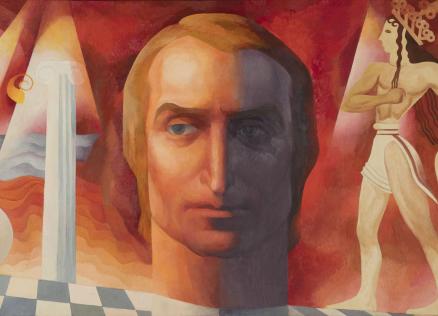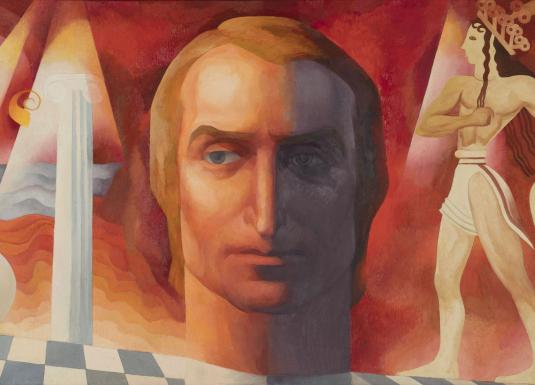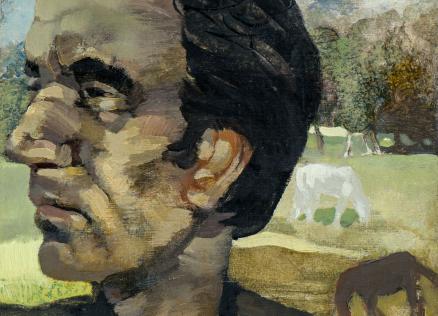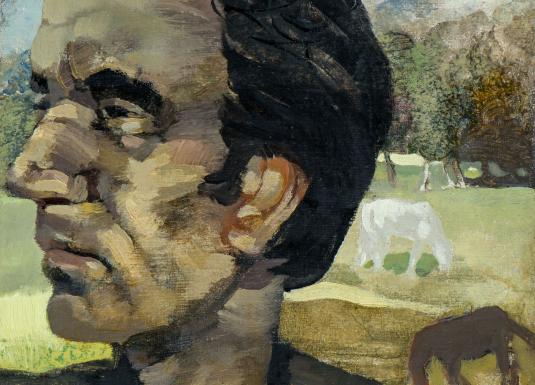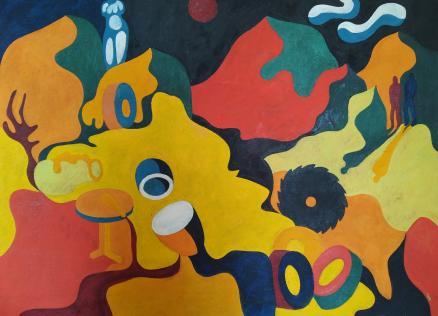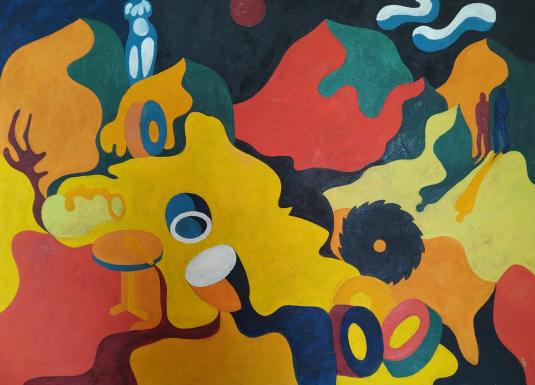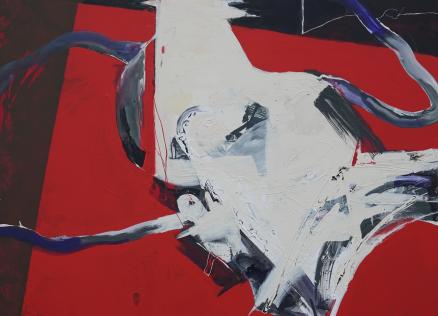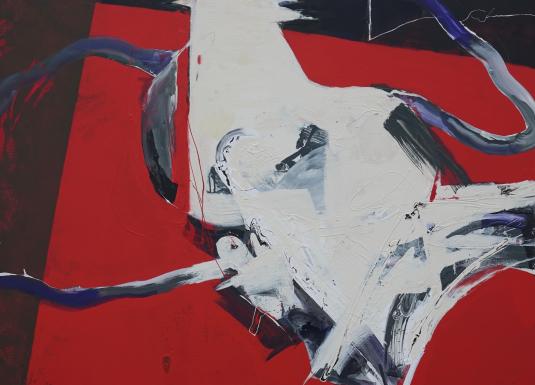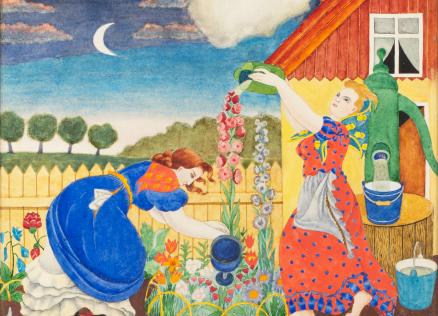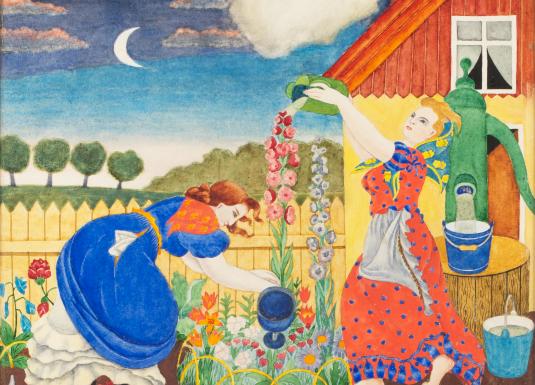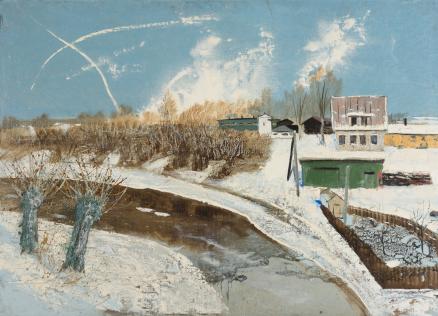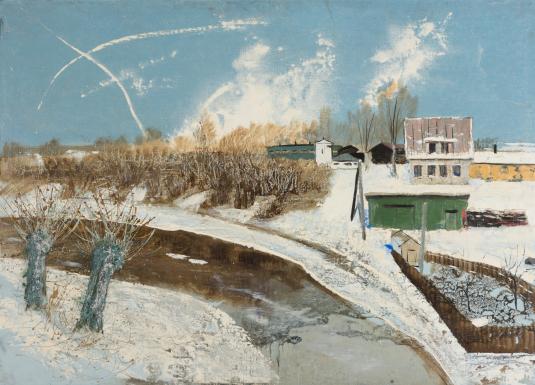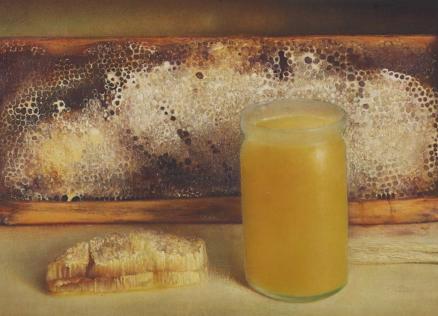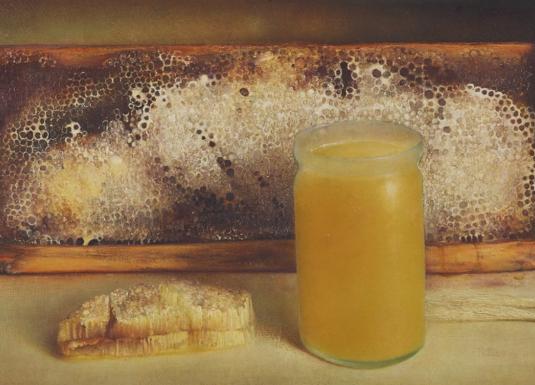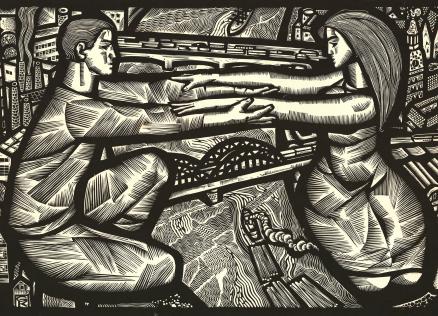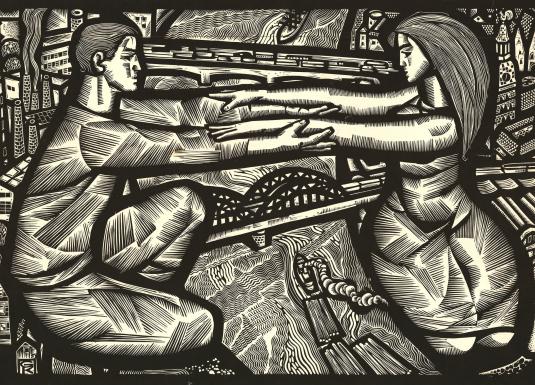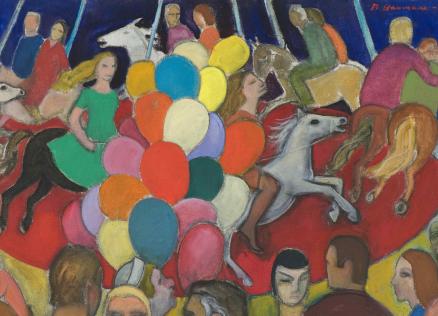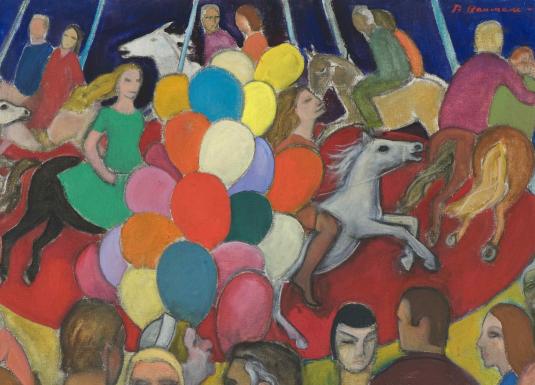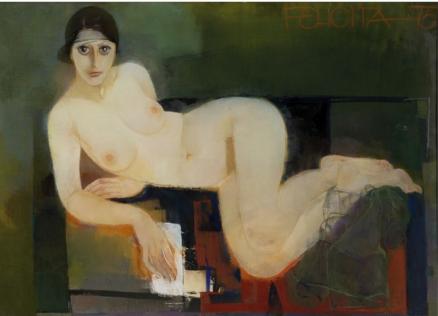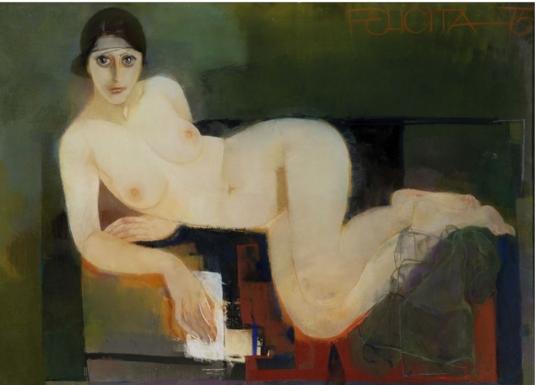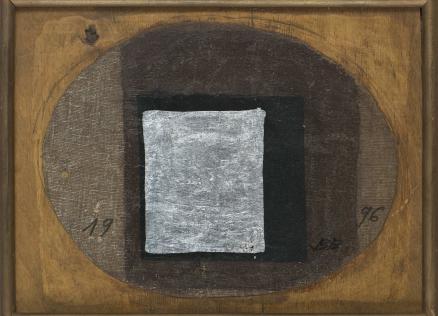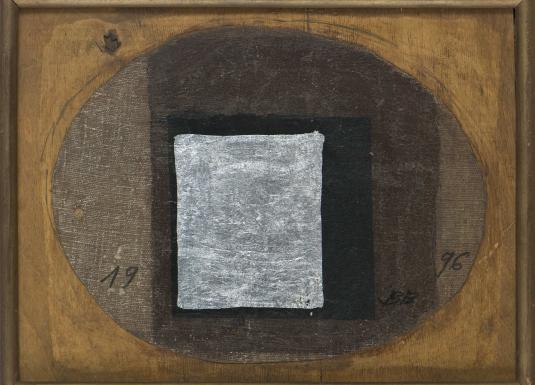Daina Riņķe. Painting
An exhibition of Daina Riņķe’s paintings, which continues the museum’s cycle of exhibitions "The Generation", will be on view in the 4th Floor Exhibition Halls of the main building of the Latvian National Museum of Art in Riga (Jaņa Rozentāla laukums 1) from 26 January to 31 March 2018.
Daina Riņķe’s laconic form of expression caught the attention of critics already in her first exhibitions at the end of the 1960s. At the time, the contents of her paintings were advantageous material for thematic art exhibitions. Her works were accepted in exhibitions and earned awards, yet the innovation in comparison with the ‘harsh style’ figurative works of the 1950s was the very treatment of the subject – motifs of rural life and the city without active participation of humans. The rejection of depicting the process of work brought a peculiarly detached, metaphysical mood, and the critics of the time were searching for a name for the artist’s interpretation of realism, seeing in her visions a fusion of hyperrealist and socialist realist currents. If back then Daina Riņķe’s works were an innovation in formal language and proof that a simple environment can be beautiful and that this self-evident existence possesses value, then today they are a nod to a vanishing time and places. Just like in reminiscence – certain scenes from life become illuminated in the nothingness of the universe of memory – clear, without unnecessary explanations.
The artist masterfully manipulates human ability to perceive a moving image – what she paints is a still, a static version of an everyday event (Workday at the Tram and Trolleybus Trust, 1980) that allows the viewers to gradually become aware of the transcendent nature of these proceedings.
Daina Riņķe builds her paintings from geometric structures of various sizes, with the energy they encapsulate simultaneously representing explosive movement. That which seems close and familiar is revealed as a part of an eternally open space. Whether it is a rural farmstead, a water cistern, heavy machinery, a running dog, a horse in the field or a man at the end of the workday – the image is perfect and finished in its completeness, with no continuation, as a memory of what it had looked like. The viewer of Daina Riņķe’s works does not appear to be consciously directed anywhere. Silhouettes of buildings and people, foggy car windows are a kind of disguise. The reality seen in dim light as if from distance still captivates and gives rise to philosophycal reflections.
Daina Riņķe (1941) is a painter. In 1965 graduated from the Department of Painting of the State Art Academy of Latvia with a diploma work under professor Eduards Kalniņš. She has taken part in exhibitions since 1966. Daina Riņķe was the Head of the Painting Studio at the VEF Culture Palace and pedagogue at preparatory course at the Art Academy of Latvia.
The artist’s works are held in the collections of the Latvian National Museum of Art (LNMA) and the Museum of the Artists’ Union of Latvia as well as private collections. The exhibition consists of works from the collection of the LNMA.
Text by Ilze Putniņa
ABOUT THE CYCLE OF EXHIBITIONS THE GENERATION
Each generation belongs to an era. In its new cycle of exhibitions The Generation, the Latvian National Museum of Art focuses on art of the second half of the 20th century. The cycle’s programme, which will be realised from 2016 to 2020 in the 4th Floor Exhibition Halls of the main building of the LNMA, includes separate expositions dedicated to such important figures in Latvian art as Felicita Pauļuka, Biruta Baumane, Daina Riņķe, Henrijs Klēbahs, Līvija Endzelīna, Gunārs Cīlītis, Rita Valnere, Aleksandrs Stankēvičs, Rūsiņš Rozīte, and Gunārs Krollis.
It is a generation of artists which were born during the first Latvian Republic in the 1920s–30s and went through dramatic epochal shifts. The free yet authoritarian Kārlis Ulmanis’ Latvia was followed by one occupation, then another, a war, another occupation and the introduction of Socialist Realism in art. Yet this was the generation which possessed youth, power and energy in the period of totalitarianism. On the one hand – communist ideology, on the other – the artists’ bohemian life imbued with idealistic hope.
There were many who in their youthful enthusiasm wanted to create “new art” or even “free art”. In 1956, the 3rd Congress of the Artists’ Union of Latvia took place in the elevated mood of the Khrushchev Thaw. It marked the arrival of young artists, who pointed to the necessity to establish a separate Section of Young Artists and to organise special young artists’ exhibitions. The First Exhibition of Young Artists’ Works was organised in 1956, and since then these annual shows became an influential event in the artistic calendar. The young artists of that time were active participants in exhibitions.
The cycle of exhibitions The Generation, dedicated to the young of the 1950s–60s, began with the show of Felicita Pauļuka’s works. The second exhibition was dedicated to the memory of Biruta Baumane. The third exhibition in the series presents the oeuvre of painter Daina Riņķe.
Text by Elita Ansone
EXHIBITION CURATOR:
Ilze Putniņa, Curator of the Latvian Painting Collection ARSENĀLS (2nd Half of the 20th – 21st Century), Latvian National Museum of Art
CURATOR OF THE CYCLE OF EXHIBITIONS THE GENERATION:
Dr. art. Elita Ansone, Head of Collections and Scientific Research Department ARSENĀLS (2nd Half of the 20th – 21st Century), Latvian National Museum of Art
